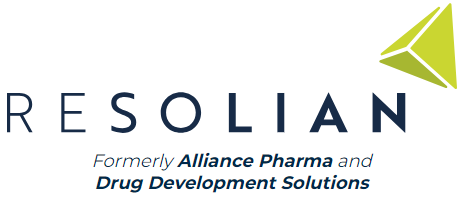Liquid chromatography-mass spectrometry (LC-MS) is a widely-used analytical tool in both industry and academia. The rapid, sensitive, and isotopic-specific analyses of analytes by MS make it a preferred technique in many areas. Additionally, stable isotope-labeled internal standard and tandem mass provide sensitive and accurate analysis of samples. Considerable amounts of literature have been published about its application in various fields, especially in biological sample analysis during new drug development. Our highly experienced team has expertise in LC-MS/MS method development and validation as well as high-throughput sample analysis in plasma, urine, and tissue matrices.
The LC-MS/MS method development can be separated into two parts: sample extraction method development and LC-MS/MS instrument method development.
Sample extraction method development
A sample extraction step may be performed using protein precipitation (PPT), liquid-liquid extraction (LLE), or solid-phase extraction (SPE) methods. PPT is a commonly used sample extraction method, especially in the drug discovery stage. It is a fast, easy-to-apply method for small molecule analysis. The drawback of PPT is that it is not a selective method like LLE or SPE, so matrix effect or ion interference may be observed in chromatograms. LLE is the other widely used sample extraction method. It can be developed as a specific method and can generate clean sample extract solutions.
Another sample extraction method, the SPE method, separates analytes in a chromatographic way and generates a cleaner resultant solution. Extract solution prepared by LLE and SPE methods are more suitable for ultra high performance liquid chromatography (UHPLC) analysis. All three sample extraction methods can be transferred to robotic systems to increase sample preparation efficiency.
LC-MS/MS instrument method development
LC-MS/MS instrument method development requires appropriate settings of LC system and MS system. For LC system setup, mobile phase, LC column, gradient, flow rate, and column temperature are the most commonly adjusted factors based on method development time, analysis run time, and expected number of samples per day.
The purpose of method development is to establish a fast, reliable method which can provide clear resolution of the analyte(s). For MS system setup, ion source parameters, mass transitions monitored in multiple reactions monitoring (MRM), and collision cell parameters are commonly-adjusted factors based on expected analyte concentration and response. The goal of adjustment is to optimize MRM transition response while remaining free of interference. The LC-MS/MS methods developed by our bioanalytical team offer expedited, sensitive, and isotopic-specific results of the analytes. LC-MS/MS method validation is necessary to obtain reliable data during new drug development. A well-developed and validated method is often used from drug development to post-marketing surveillance.
Characteristics used in our LC-MS/MS method validation typically include accuracy, precision, specificity, quantification limit, linearity, recovery, matrix effect, and stability. All our LC-MS/MS methods are developed and validated in accordance with either client-specific protocols or internal SOPs to meet regulatory guidelines, such as FDA, EMA and ICH. These methods are suitable for library compound high-throughput screening analysis, pharmacokinetic study sample analysis, etc. To ensure effective collaboration, we frequently communicate with clients on experiment design, trouble shooting, and data interpretation.
Here is a list of our current services in the Bioanalytical Department:
- Method development and validation (LC-MS/MS and HPLC)
- Method transfer and optimization (LC-MS/MS and HPLC)
- Support for pre-clinical TK/PK studies
- High throughput analysis to support discovery TK/PK/PD studies
- Analytical support for clinical trials
- Pharmacokinetic (PK) studies
- Bioequivalence studies
- Metabolite identification







